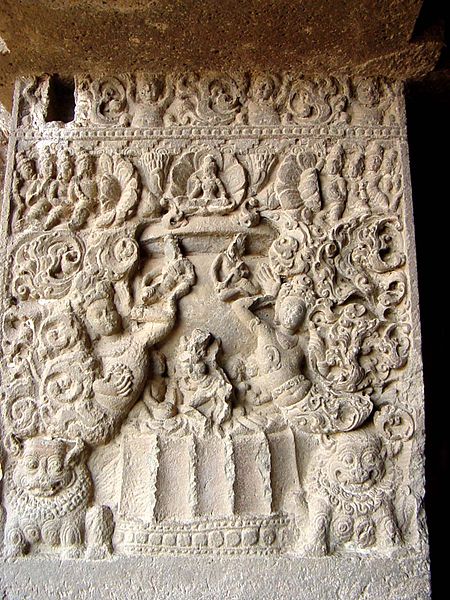
Parvati, the Goddess of Plenty
Cave 15, Ellora
This richly carved panel is distinguished by the fineness and exuberance of its carving and decoration. Its central design is a triangle, defined in the main by a kalashha pot that rests upon the lowest drum of a fluted column. From top to bottom: at the apex of the triangle, Parvati meditates within a lotus mandorla. Below, and surrounding the middle of the triangle, two large dancing figures emerge on either side from swirling arabesques of vegetation. (Compare Ravana Phadi Temple at Aihole, and Virupaksha Temple at Pattadakal.) At the base of the triangle, the column is flanked by two lions.
An amazing profusion of secondary figures, including musicians, attendants, and scrolling foliage, fill in the design. For example, take a look at the second register from the top, in which a line of attendants are separated from Parvati on either side by an outward-facing half-lotus.
The overall composition might even suggest a stupa, if this were a Buddhist relief, which it isn't. Cave 15 is, though, a Hindu conversion - specifically to Shiva, which reinforces the interpretation of the apex goddess as Parvati - but in my opinion, several important elements in this composition - the stupa-form pot and column, the lions - might have been taken over by a Hindu artist from some Buddhist examples.


